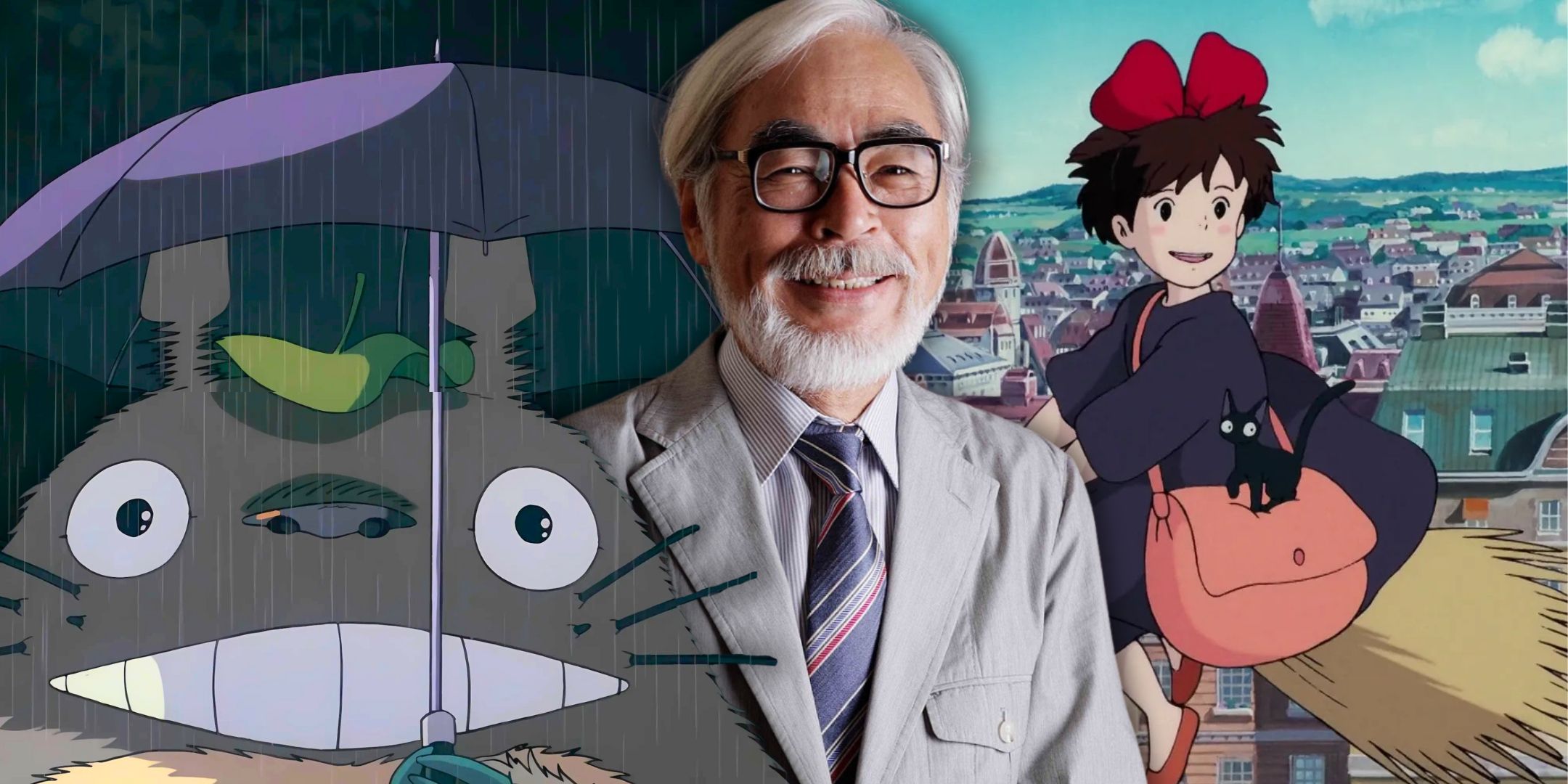10 Common Misconceptions About Studio Ghibli Films

Common Misconceptions About Studio Ghibli
Studio Ghibli is one of the most recognizable names in the world of cinema. Since its formation in 1985, the studio has produced a collection of iconic films that have captured the hearts of audiences and critics alike. Many consider watching movies like My Neighbor Totoro and Spirited Away to be a rite of passage for children. However, despite its global fame, several misconceptions about the studio persist among fans and newcomers.
Hayao Miyazaki Makes All Of Studio Ghibli's Movies
While Hayao Miyazaki is undoubtedly one of the most celebrated directors in modern filmmaking, it's incorrect to assume he is the sole creative force behind all Studio Ghibli films. Although he has directed some of the studio’s most famous works, such as Howl's Moving Castle, Spirited Away, and Kiki's Delivery Service, he is not the only director at the studio. Other notable films like Grave of the Fireflies, The Cat Returns, and When Marnie Was There were directed by different members of the team. This misconception likely stems from Miyazaki’s prominence and the fact that he is one of the three co-founders of Studio Ghibli alongside Toshio Suzuki and Isao Takahata.
Not All Studio Ghibli Movies Are Cozy
Many people describe Studio Ghibli films as "cozy," often associating them with the whimsical charm of Kiki's Delivery Service or My Neighbor Totoro. While these films are indeed relaxing, they are far from being just lighthearted. The studio has never shied away from tackling serious and complex themes. For example, Princess Mononoke delves into environmentalism, pacifism, and the consequences of war, featuring intense battle scenes and emotional moments that are anything but comfortable. These deeper narratives show that Studio Ghibli is more than just a collection of cute, fantastical stories.
Studio Ghibli Isn't a Small Studio
Despite its independent feel, Studio Ghibli is not a small animation studio. It typically employs between 190 and 300 people, depending on the year, which places it in line with many other studios. The perception of it being a small operation may come from the fact that it focuses on fewer projects at a time compared to larger studios. Additionally, the studio's founders rarely engage with the media outside of promotional events, and language barriers have limited American audiences' access to information about the studio. However, this does not diminish its influence in the animation industry.
Studio Ghibli Doesn't Only Make Fantasy Movies
While many of Studio Ghibli's most popular films are fantasy-based, the studio has explored various genres throughout its history. For instance, My Neighbors the Yamadas is a domestic comedy that follows the humorous misadventures of a family. Ocean Waves is a grounded coming-of-age drama, and the studio has also produced documentary films like The Story of Yanagawa's Canals. These examples demonstrate that Studio Ghibli is not limited to one genre and has a diverse filmography.
Studio Ghibli Hasn't Always Been Popular in America
Although Studio Ghibli is now a household name in the United States, this was not always the case. Early English dubs of films like Spirited Away and Princess Mononoke struggled at the box office. It wasn’t until Spirited Away won the Academy Award for Best Animated Feature in 2003 that the studio gained widespread recognition in America. This milestone helped bring Studio Ghibli into the mainstream and increased its popularity globally.
Studio Ghibli Isn't Just for the Big Screen
Contrary to popular belief, Studio Ghibli has created content for smaller screens as well. The studio has worked on made-for-TV projects such as Ocean Waves and Earwig and the Witch, which had limited theatrical releases in Japan. Additionally, it has produced commercials for companies like Vermont Curry and House Foods. In recent years, the studio has also created short films exclusively for the Studio Ghibli Museum, proving that its work extends beyond traditional cinema.
Studio Ghibli Doesn't Have One Animation Style
While many people associate Studio Ghibli with the visual style of films like Spirited Away or My Neighbor Totoro, the studio has experimented with various aesthetics over the years. For example, My Neighbors the Yamadas features a manga-style design, while The Tale of the Princess Kaguya draws inspiration from traditional watercolor paintings. More recently, Earwig and the Witch used 3D computer graphics, showcasing the studio's willingness to innovate and evolve.
Nausicaä of the Valley of the Wind Isn't the First Ghibli Film
Although many consider Nausicaä of the Valley of the Wind to be the first Studio Ghibli film, it was actually produced by Topcraft, a different studio. However, the film shares many elements with early Studio Ghibli works, including being based on a manga written by Hayao Miyazaki, directed by him, and featuring music by Joe Hisaishi. Despite its production by another company, Nausicaä is often seen as a spiritual predecessor to Studio Ghibli's later films.
Studio Ghibli Films Don't Have Dark, Hidden Meanings
Some online fan theories suggest that Studio Ghibli films contain hidden, sinister meanings. For example, a theory claims that Spirited Away is a metaphor for trafficking and the loss of innocence. However, these theories often rely on fake or poorly translated quotes from Hayao Miyazaki. In reality, Miyazaki has provided clear explanations for the themes in his films, making these theories largely unfounded.
Most Studio Ghibli Films Are Based on Books
While Studio Ghibli is known for creating unique stories, the majority of its films are adaptations of books. For example, Howl's Moving Castle is based on a novel by Diana Wynne Jones, Arrietty is adapted from Mary Norton's The Borrowers, and Kiki's Delivery Service is based on Eiko Kadono's novel. The studio often takes creative liberties with these source materials, resulting in films that may only have passing similarities to their original books. This adaptation approach highlights the studio's ability to transform existing stories into new, compelling narratives.
Post a Comment for "10 Common Misconceptions About Studio Ghibli Films"
Post a Comment